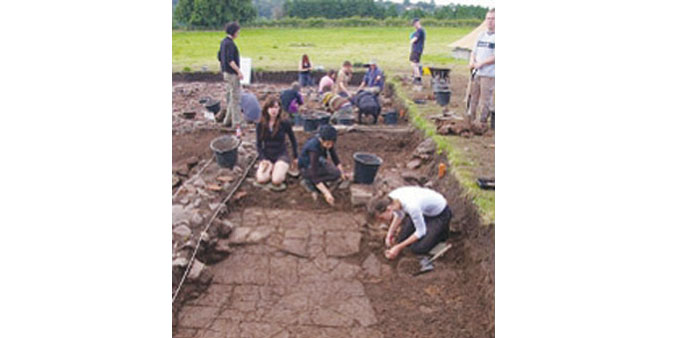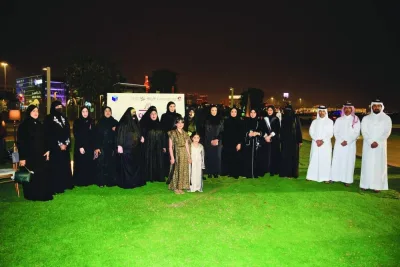Guardian News and Media/London
Scores of archaeologists working in a waterlogged trench through the wettest summer and coldest winter in living memory have recovered more than 10,000 objects from Roman London, including writing tablets, amber, a well with ritual deposits of pewter, coins and cow skulls, thousands of pieces of pottery, a unique piece of padded and stitched leather and the largest collection of lucky charms ever found on a single site.
Sophie Jackson, of Museum of London Archaeology, said: “The waterlogged conditions left by the Wallbrook stream have given us layer upon layer of Roman timber buildings, fences and yards, all beautifully preserved and containing amazing personal items, clothes and even documents - all of which will transform our understanding of the people of Roman London.”
The horrible working conditions, in a sodden trench up to seven metres deep along the buried river, resulted in startling preservation of timber including massive foundations for buildings, fencing still standing to shoulder height, and remains of a complex Roman drainage system, as well as the largest collection of leather from any London Roman site, bone and even a straw basket, which would all have crumbled into dust centuries ago on a drier site.
The most puzzling object is an elaborately worked piece of leather, padded and stitched with an image of a gladiator fighting mythical creatures.
The archaeologists believe it may have come from a chariot, but are only guessing since nothing like it has ever been found. Other finds include an amber charm in the shape of a gladiator’s helmet, which may have been a good luck charm for an actual gladiator; a horse harness ornament, plus clappers to make a jingling sound as the horse moved; and a set of fine-quality pewter bowls and cups, which were deliberately thrown into a deep well.
The site at Great Queen Street was at the heart of the Roman city of London. It is now being redeveloped as a new headquarters for Bloomberg designed by Lord Foster, but after World War II, when Victorian buildings were cleared for an office block, it became internationally famous when a buried Temple of Mithras was found.
Crowds queued around the block to see the remains, which were preserved after a public outcry led to questions in parliament over the threat of their destruction.



